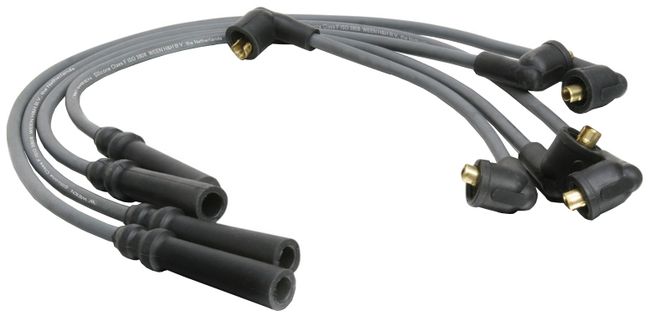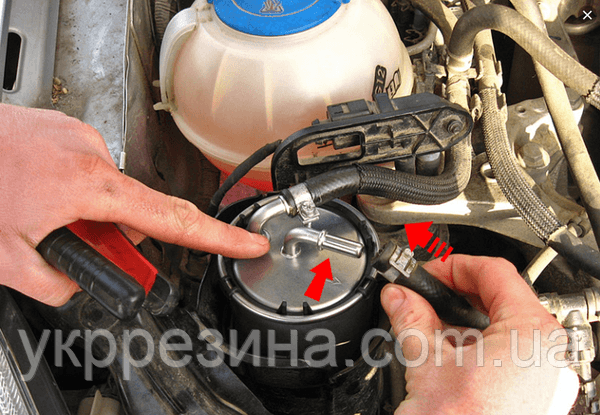
How to replace ignition cables (spark plug wires) in your car
The ignition cable or spark plug wire carries the signal from your car's computer to the spark plugs. This is very important for the ignition system.
The purpose of your car's spark plugs is to ignite the fuel and air present in the combustion chamber. They do this because of the signal received from the computer module or distributor cover.
If the ignition cable or spark plug wire carrying this signal fails, engine operation becomes ill-timed and with insufficient power. One or more cylinders may be misfiring or loose. Another result of incomplete combustion of fuel and air is the accumulation of gases and residues in injectors or cylinders.
Symptoms of failure of the ignition cables include rough idle, check engine light on, and no engine at all. All this can be avoided very easily by following a few simple steps.
Part 1 of 1: Replacing Ignition Cables
Necessary materials
- Ignition cable (or spark plug wire) removal tool (optional)
- Pliers (optional)
- Interchangeable cables
- Socket set and ratchet
Grease for spark plug wires (optional)
FunctionsA: When purchasing replacement cables, make sure they are the correct length. If necessary, use old cables for reference. The location of the cable on each cylinder determines the length of the cable from the distributor or module.
Step 1: Disconnect the battery. Disconnect the negative battery cable to cut off power to the ignition cables.
Disconnect the bolt securing the cable to the terminal using a socket or wrench.
- A warning: Set the negative battery cable aside so that it does not come into contact with any metal objects, otherwise a connection may be made to restore power to the cables.
Step 2: Locate the ignition cables. Cables will run from the spark plugs at the top of the cylinders to the distributor cap or module that powers them.
Step 3: Replace cables. Remove and replace the spark plug wires one by one.
By doing them one at a time, you don't have to worry about accidentally switching wires.
To remove the old cable, pull straight up on the cable boot at the end of the spark plug, and then pull up on the boot connected to the cover or distributor module. Be sure to pull only on the boot; DO NOT pull on the cable itself.
- FunctionsA: If you're sure you're not going to reuse your old spark plug cables, you can use a pair of pliers to remove them. Pliers will most likely damage the sheath and terminal of old wires, so it's not recommended to use pliers on any ignition cables you plan to use again. Otherwise, you can do it by hand or with a spark plug removal tool.
Again, make sure the length of the disconnected cable matches the length of the new cable. No extra wire is needed and your motor may not have enough room to compensate.
More important than matching cable lengths is that you don't mix up the order of the ignition cables. Spark signals are sent in a specific order to each cylinder when the piston is at top dead center (at the very top of the cylinder). Improper installation of these cables can result in poor combustion or misfiring in the cylinder, causing drivability problems and potentially serious engine damage.
- FunctionsA: If the wiring order ever gets messed up, see the wiring order for your vehicle for reference.
When removing the spark plug or ignition cables, inspect them for signs of other problems with your vehicle. The most easily detected signs of combustion of carbon or oil. This may indicate a faulty valve cover gasket and/or faulty O-rings around old spark plugs.
To install a new cable, put the boot of the new ignition cable on one end of the module, and then put the other end on the spark plug.
- Functions: If you want to use spark plug wire grease (dielectric grease), put a small drop into a new boot before putting it on the spark plug.
Move on to the next cable and repeat this step.
Step 4 Connect the battery. Connect the negative battery cable to the terminal to restore power.
Hand tighten the lock bolt and tighten with a wrench or socket.
After completing this step, close the hood of the car.
Step 5: Test drive the car. When the car is in park, start it. If the idle stays between 600 and 1,000 rpm, go for a test drive and see how your car handles.
- Attention: Listen for stuttering, rough idle and misfiring, and feel for any sluggishness.
The ignition system of your car plays a very important role in its operation. Problems with the ignition system slow down the engine and reduce its power. Continued use under these conditions will cause various damage and wear to other parts involved. If you follow the steps outlined in this guide, you should be able to fix these issues and avoid further damage. However, if you'd rather have this repair done by a professional, you can always count on one of AvtoTachki's certified technicians to properly replace your ignition cables at home or in the office.
